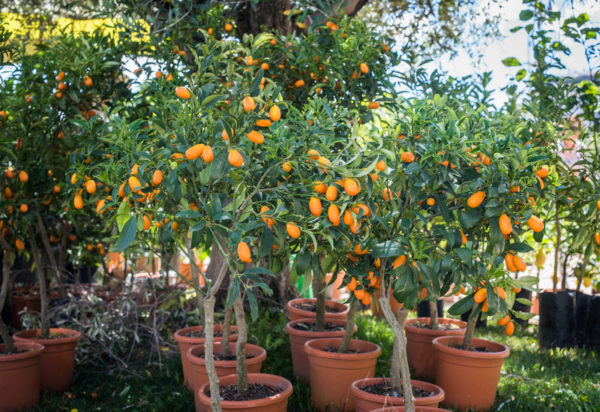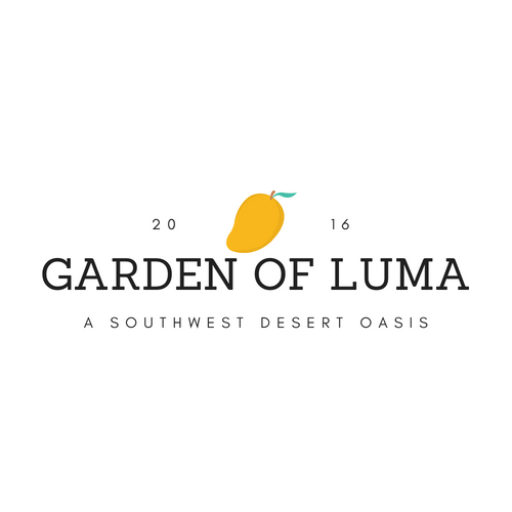Fruit Tree Buyers Tips: How to Choose Fruit Trees?

Nurseries can be a playground for gardeners. We become enthralled with all the available plants, but just grabbing fruit trees impulsively, can potentially mean throwing your money away.
Spending your money there doesn’t always mean you’re getting a healthy fruit tree. When you shop for a fruit tree at a nursery, generally they’re going to carry several of the same variety. This is your time to take a couple extra minutes to inspect the tree so your money is well spent.
So how do you choose a fruit tree? Here are my 12 tips for buying a tree that will produce fruit for years to come.
Root Flare
It’s not uncommon for nurseries to top off container fruit trees with soil. When they do this without replanting the tree, the root flare becomes buried. It’s important for the root flare or area where the root system begins, to be slightly exposed.
Trees need to be able to access oxygen through the roots, so if the flare is completely buried, it becomes a problem. Examine the flare on the tree that your purchasing, if it is slightly buried, it shouldn’t be an issue, just keep in mind that you’ll need to expose it at planting.
If it has been significantly buried, I’d avoid that tree, and purchase another. You want a healthy tree from the start. If it’s been sitting that way for a while, it may have already begun to suffer.
Tree Appearance
Examine the overall appearance of the tree. Do the leaves look vibrant and green? Does the canopy have nice uniformity? Does the tree have a droopy appearance or signs of losing leaves?
Are their signs of new growth? Deficiencies in any of these areas can indicate some potential health problems with the tree.
RELATED POST: Maintaining Healthy Fruit Trees in Hot Climates
Trunk Shape
A fruit tree that starts with a crooked trunk is going to be a hassle to continuously try to straighten. I have a couple trees that have crooked trunks and it’s always been a thorn in my side trying to get those trees to grow the way I want them. Pay attention to the trunk and ensure that you’re getting a tree that’s growing straight.

Trunk Size
Getting a tree that has the fattest trunk possible is going to help your tree to be more vigorous and handle the elements better. Even though you may be buying a certain container size, some trees may have gained more size.
Root Bound
Avoid fruit trees that appear to be root bound. A couple indicators is that the roots are growing out of the bottom of the container or it appears that the tree is too large in comparison to the container size.
Containers can stunt the growth of the tree and cause problems when putting a tree in the ground if its been root bound. When roots are continuously swirling around the pot it can girdle the tree, which can ultimately choke it to death.
Compatible with your Climate
Some places will sell anything in order to make money. Make sure you have an idea of what works well in your area. For example, living in the Phoenix Arizona desert we deal with extreme dry heat in the summer and light frosts in the winter.
A fruit tree that is well suited to cooler temps and long winters isn’t going to thrive in our environment. Some fruit trees need a certain amount of chill hours to produce fruit, so knowing these types of climate requirements will help you pick the right variety.
Tree Size
Think about how much space you’re working with in your yard prior to going shopping. Fruit trees can come in different sizes for the same varieties. Fruit trees can be grafted to root stocks that are dwarf, semi-dwarf, or standard size trees.
Without considering this, you may grab a citrus tree thinking that its going to be a small 8-10 foot tree and you ended up getting a full size citrus tree that can be 20 feet or more.
Moist or Dry
Feel the soil to determine if it has been adequately watered. You don’t want to buy a tree that’s been suffering from lack of water or over watered. Stick your finger in the soil to determine how dry or moist it is. If the soil seems overly saturated, smell the soil. It’ll have a rotten smell if the roots have started to root from over watering.
Self-Pollinating
Some varieties of fruit trees require a second variety for cross pollination in order to produce fruit. For those of us urban gardeners growing fruit trees we like to maximize the limited space we have, so buying two trees instead of one isn’t always feasible.
Of course you can always graft, but you’ll still have to identify scions to utilize. Your best bet is to just make sure that you’re selecting a variety that is self-fertile so you’ll have fruit production.
Disease Free
Take a look at the bark of the tree and branch tips. Look for any signs of die back on branches or damage to the trunk. Black spots or sap oozing can also be causes for concern. Open wounds can cause the tree to be more susceptible to diseases or pests. Look under the leaves for any signs of pests. Lots of pests like to hide on the underside of leaves.
Smaller Size Trees
In some cases, starting with a smaller size tree can lead to a tree that outperforms one that you purchase in a larger container. When you plant a 3 gallon tree versus a 15 gallon tree it’s easier to work with the root ball and less likely that you’ll severe any roots.
Also, you avoid any of the potential issues with the stunted growth from being in a container too long as previously mentioned.
RELATED POST: When is the Best Time to Plant Fruit Trees in Hot Climates
Shop at a Reputable Nursery
Buying from some of those big box stores may be cheaper or convenient, but it doesn’t always mean quality. Shopping at nurseries that specialize in growing in your climate, have knowledge of the fruit trees you intend to grow, and are backed with a strong reputation are places you want to get your fruit trees from.
Click Here for my recommendations of the Best Nurseries in the Phoenix area. It doesn’t hurt if they backup their plants with a warranty or some sort of guarantee.
There you have it! Following these simple tips will help make that fruit tree purchase a breeze. Buying a healthy tree from the start will set you up for a flourishing fruit tree with years of fruit.
Please comment below on anything that you’ve enjoyed from this post or your experience buying fruit trees.
ID 93100723 © Fabio Pagani | Dreamstime.com
ID 28316550 © Philippehalle | Dreamstime.com
